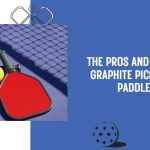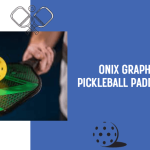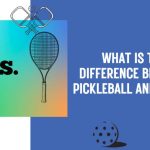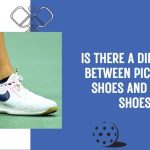Pickleball enthusiasts, gear up!
Today we’re diving deep into the world of paddle materials to help you better understand your game and make informed decisions about your next pickleball paddle purchase. Graphite or fiberglass – which one should you choose? There’s no need to worry; we’ve got you covered.
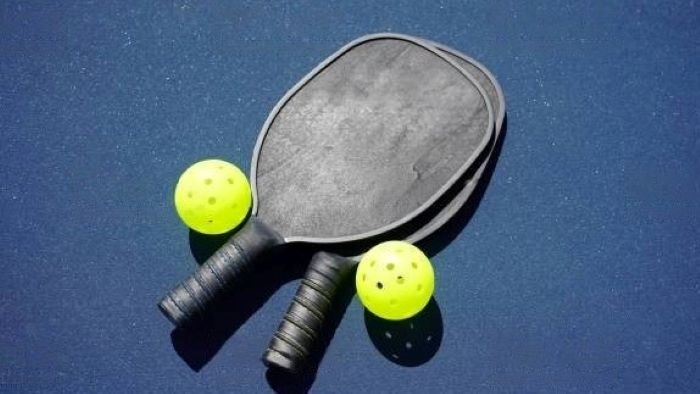
This comprehensive guide will explore the differences between these two popular materials (Graphite vs. Fiberglass Pickleball Paddles), highlighting their pros and cons while shedding light on what sets them apart.
So grab a seat, loosen up those pickleball muscles for a moment, and embark on an exciting journey through the fascinating realms of graphite and fiberglass pickleball paddles!
You Might Also Like:
What Is the Difference Between Graphite & Fiberglass Pickleball Paddles?
Graphite and fiberglass pickleball paddles differ in several ways, including weight, flexibility, cost, pop and spin potential, and durability. Let’s examine each factor in detail:
Weight
When choosing a paddle for a game of pickleball, it’s essential to consider the material it’s made of. Graphite paddles are popular because they are lightweight, making them easier to handle and less tiring to use during extended gameplay.

On the other hand, fiberglass paddles tend to be heavier, which can provide more power and stability for stronger hits, but may also require more effort to control and swing effectively. Ultimately, choosing these materials will depend on the player’s needs and preferences.
Flexibility
Graphite paddles are known for their stiffness, which makes them ideal for players who value consistency and accuracy. The rigidity of the material results in a less forgiving and responsive paddle, meaning that it requires a more skilled and experienced player to use it effectively.
On the other hand, fiberglass paddles are more flexible, which makes them bouncier and more lively. However, this flexibility also makes them less predictable and precise, making them a better choice for players prioritizing power and speed over precision.
Expensive
Graphite paddles are of higher quality and durability than fiberglass paddles but are also more expensive. On the other hand, fiberglass paddles are more affordable, making them popular among pickleball players. However, their lower price comes with reduced durability and reliability.
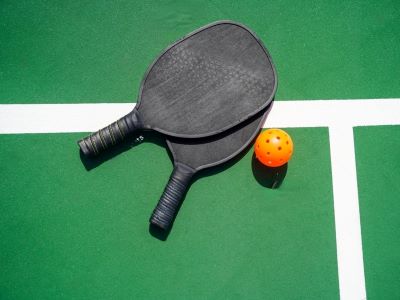
Thus, while graphite paddles are a preferred choice for serious players looking for better performance, fiberglass paddles are a more accessible option for beginners and casual players looking to enjoy the sport without investing heavily.
Pop and Spin
Pickleball paddles can be made from different materials, such as graphite and fiberglass, which can affect the paddle’s performance. Graphite paddles have less pop and spin, making them ideal for players prioritizing control and touch over power and spin.
On the other hand, fiberglass paddles have more pop and spin, making them suitable for players who value power and spin over control and touch. Ultimately, the choice of material depends on the player’s playing style and preferences.
Durability
When choosing a pickleball paddle, the material it is made of is an essential factor to consider. Graphite paddles are known for being more durable than fiberglass paddles, making them an excellent option for players who want a paddle that can withstand a lot of wear and tear.
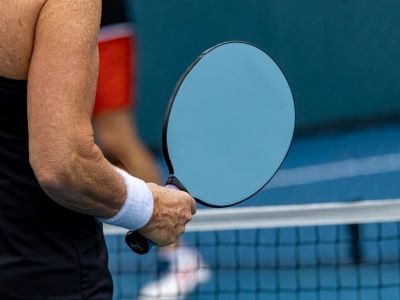
On the other hand, fiberglass paddles are less durable than graphite paddles and may need more maintenance to keep them in good condition. They can also be more prone to chipping or cracking if used frequently.
Choosing a graphite and fiberglass paddle will ultimately depend on your needs and preferences as a player.
Pros and Cons of Each Material
Graphite and fiberglass are both famous materials used to make pickleball paddles. Graphite is a lightweight, stiff material that provides excellent control and power. Fiberglass is heavier and softer than graphite but still provides good power.

Each material has pros and cons to consider before purchasing a paddle. Let’s check out –
Graphite
Pros
- More durable than some other materials.
- The graphite paddle is lightweight and easy to maneuver.
- It will provide good power and control.
- It offers a consistent playing experience.
Cons
- More expensive than some other materials.
- Can be less forgiving and offer less “feel” than some other materials.
- Can be more brittle and prone to cracking than some other materials.
- May not be ideal for players who prefer a softer, more flexible paddle.
Note: Here are some of the best graphite pickleball paddles available on the market today:
- Onix Graphite Z5
- Selkirk Amped Epic
- Paddletek Tempest Wave Pro
Fiberglass
Pros
- Fiberglass paddles are heavier that provide more power.
- Fiberglass paddles are more affordable in price.
- Fiberglass paddles are good for beginners.
- It can be found in a variety of shapes and sizes.
Cons
- Less durable than other materials, can chip or crack more easily.
- May need more maintenance to keep it in proper condition.
- May not have as much “feel” as other materials.
- Not as common as other materials and may have fewer options to choose from.
Note: Here are some of the best fiberglass pickleball paddles available on the market today:
- Joola Ben Johns Hyperion Pro
- Engage Encore Pro
- Paddletek Pro
FAQs
Consider your play style when choosing pickleball equipment. Recreational play usually requires a beginner paddle. A paddle with an extended sweet spot and a wider face may be best for more competitive players. It will improve their game. Indoor balls are typically lighter and designed for slower play than outdoor balls; choose balls according to the game type. Pickleball players should also wear protective gear, such as eyewear, for safety.
When buying a pickleball racquet, you should consider the following factors: weight, size, string pattern, and type of grip. The racquet’s weight should be comfortable for your skill level and size; a heavier racquet will provide more power but may be challenging to maneuver. Size is also key; you want it to fit your hand comfortably. The string pattern refers to how dense the strings are in the racquet head – denser strings offer more control and spin but affect power. Lastly, you’ll want to choose a grip type that fits your hand comfortably and allows maximum control when playing.
To clean a fiberglass pickleball paddle, use a damp cloth to wipe away any dust or dirt on the surface of the paddle. A mild soap and water solution can gently scrub away any stuck-on debris. Rinse off with clear water and dry thoroughly with a soft cloth before storing.
Conclusion
After exploring the differences between graphite and fiberglass pickleball paddles (Graphite vs. Fiberglass Pickleball Paddles), it’s clear that both materials have their unique strengths and weaknesses.
Choosing between graphite vs. fiberglass pickleball paddles depends on your playing style and needs as a player. Considering factors like budget, skill level, and playing style preferences is essential before deciding.
No matter which material you choose in your next purchase of a pickleball paddle – we hope this article has helped you make an informed decision!

I am a professional physiotherapist and the author of the BallSportsPro. I worked with athletes of all levels, from amateur to professional, and i helped them overcome injuries and improve their performance. I am a certified Pickleball instructor and has been playing the sport for over 10 years.




